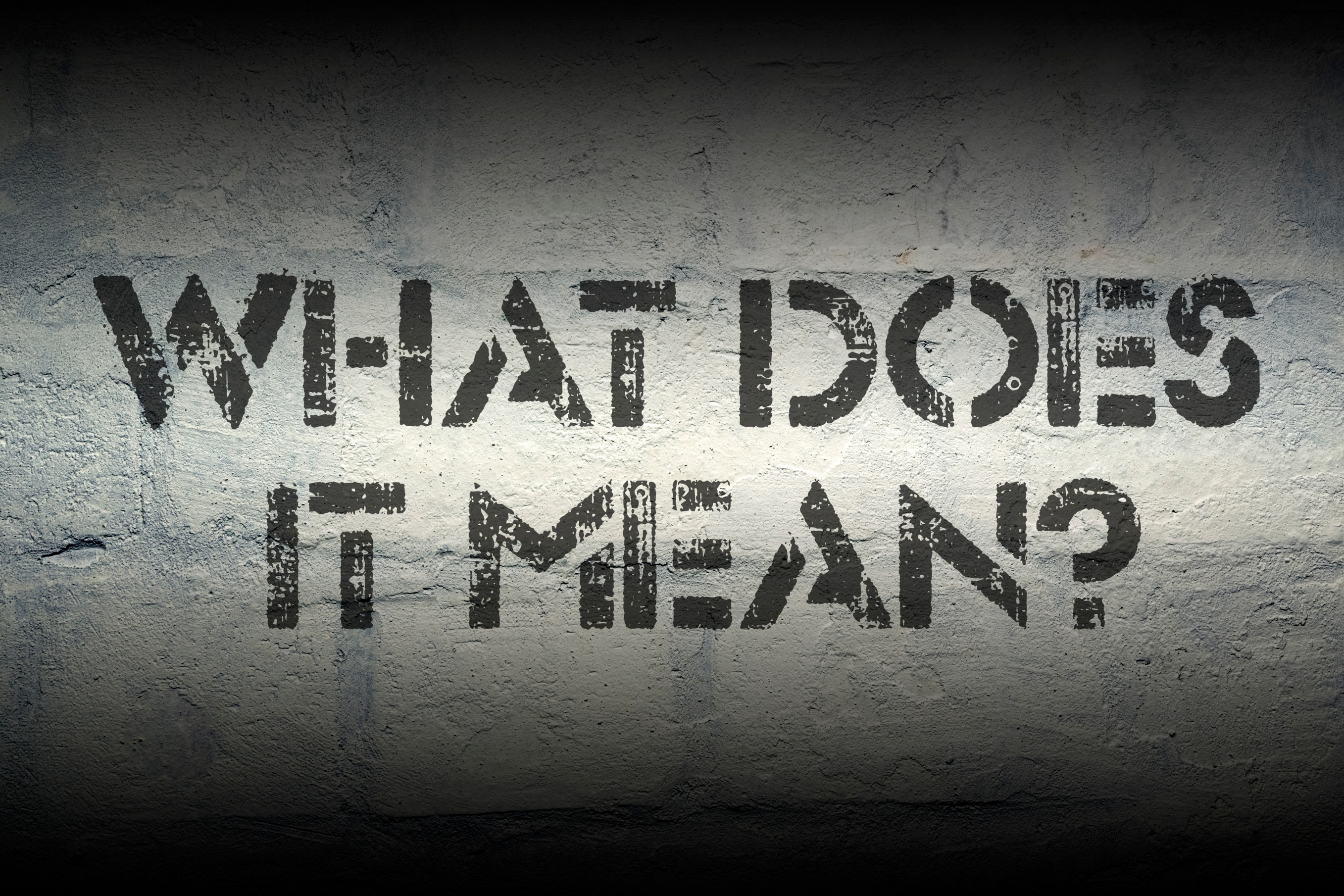
by admin | Mar 31, 2022 | Hot Topics, Human Resources
 You’ve probably been hearing about the Great Resignation (or however you want to describe it) for months now. Even if you’re not dealing directly with increased turnover, your employees know they have options. Their friends, family, and people they know peripherally or on social media have made the leap and are gleefully announcing it on LinkedIn.
You’ve probably been hearing about the Great Resignation (or however you want to describe it) for months now. Even if you’re not dealing directly with increased turnover, your employees know they have options. Their friends, family, and people they know peripherally or on social media have made the leap and are gleefully announcing it on LinkedIn.
Some job-hoppers may be emboldened by the movement to quit good jobs in the hope of something better—better pay, more flexibility, or more opportunities for advancement. Some have simply been pushed to the brink by dead-end jobs, lousy company culture, or ineffective managers. Others have given up trying to “have it all” and left the workforce completely.
But what if employers could capitalize on this current “I quit” mood? If people are leaving jobs for something better, offer something better! Here are some ideas to create an engaged and committed workforce:
1. Understand and Be Responsive to Employee Needs, Motivations, and Priorities
A paycheck may be the reason everyone has a job in the first place, but it’s not the only reason people choose to work or decide to work for one employer over another. Your employees stick with you because there’s something in it for them besides the money. The job is useful to them. Knowing why it’s useful enables you to keep employees satisfied and, better yet, make their jobs even more appealing.
2. Prioritize Employee Development
A work environment in which people gain knowledge, learn new skills, and advance in their careers speaks more clearly and loudly than any marketing message can. People like working where they can grow and develop. According to a LinkedIn report, companies “that excel at internal mobility are able to retain employees nearly twice as long as companies that struggle with it.” And a better trained workforce is also a more productive and profitable workforce!
3. Reward Success
In fact, reward anything you want to see more of. Whether large or small, the rewards have to be meaningful. Ideally, figure out what type of reward speaks to each employee. For some, acknowledgment in a company meeting will make their heart sing. For others, receiving a token of your appreciation, such as a coffee gift card, will be more meaningful.
4. Allow for a Healthy Work-Life Balance
Flexibility is a big selling point for employees looking for better balance between work and life. Your employees have other commitments they need to attend to. Some are caring for young children or other family members while navigating daycare and school closures or multiple appointments. Give employees the time to see to those commitments and have a life outside of work, and you’ll get more from them when they’re on the job. Options may include remote or hybrid work, paid time off, flex hours, four-day workweeks, alternative schedules, and reducing workload. Remember, however, that policies are only as good as the practices around them. Ensure that employees don’t need to jump through hoops to request time off. Remind managers to be responsive to requests for time off and on the look out for signs that employees are feeling overwhelmed.
5. Conduct “Stay Interviews”
Don’t wait until people are leaving to investigate what could have inclined them to stay. Talk to employees now about what’s going well, what pain points they’re experiencing, and what could be done to take the relationship to the next level. Stay interviews enable you to address problems and unfulfilled wishes before they drive people out the door.
By Lisa DeShantz-Cook
Originally posted on Mineral

by ckistler | Mar 9, 2021 | Human Resources

In an ideal world, communication would be easy. We’d immediately know exactly what to say or write. Emails, Slack messages, and reply threads would practically write themselves. And there’d be no confusion about what anyone meant, ever.
Of course, communication never works that way. We stare at the computer screen trying to decide how to begin an email. We misspeak or garble our words. We don’t always convey exactly what we intend. We misunderstand, overlook, or forget information we’ve been given. We also sometimes read emotions into words that weren’t what the writer was feeling. Or we pack our speech with such an emotional punch that it distracts from the point we’re trying to make.
Written communication often exacerbates these issues, a fact that has many leaders worried since more people are working remotely and relying on the written word to do their jobs. It’s no secret that we spend far too much time on email and other communication tools.
Fortunately, you don’t necessarily need to hire a writing coach to teach your employees better writing skills—although this can in some cases be a good idea. You can significantly improve communication in your organization by asking your employees to consider the following practices in their written communications:
Break up long sentences and paragraphs. A big unbroken block of text is likely to befuddle your reader before they even get to the first word. Long sentences and paragraphs also make comprehension and retention of information much more difficult. Note the differences in these two communications:
Sample 1: I support the goals outlined in the proposal you sent to me yesterday, especially the need to better define appropriate metrics around the solicitation of customer satisfaction scores, and I want to thank you for the thought you gave to proposing workable solutions, but I’m not sure if all of the proposed solutions will work at this time. Let’s discuss it all at our next check-in.
Sample 2: Thank you for sending the proposal yesterday. I appreciate the thought you put into it. I agree with you about the goals, especially what you wrote about customer satisfaction scores. The solutions you proposed, however, may be a challenge to implement right away. Let’s discuss the proposal at our next check-in.
These samples provide the same information, but the second is easier to follow and digest.
Use clear, concrete terms. Vague words, convoluted ideas, and broad generalizations make for easy miscommunication. Your reader will be more likely to understand your meaning if your language is specific. Remember too that just because something is clear to you doesn’t necessarily mean it will be clear to your reader. Compare these two statements:
Sample 1: Would you be able to review the thing I sent you earlier?
Sample 2: Here’s the letter for Anil I told you about this morning. Would you be able to proofread it for typos by the end of the day?
The first sample is likely to cause confusion and frustration if the recipient has recently received a lot of “things” from the writer or other people. In contrast, the second sample makes the context and the requested task clear to the reader.
Provide context and direction when adding someone to a conversation. Most of us have had the experience of receiving a forwarded email that we’re not immediately sure what to do with. Should we keep it as a reference? Read through the thread? Respond in some way? We haven’t been told. Don’t do this. You should clue the reader in to what the conversation entails and what they need to know and do in response. Compare:
Sample 1: Please see below. What do you think?
Sample 2: Please read through the conversation below and note the product request from Oliver. Is that something you can add to your work this week?
The first sample is likely to prompt the recipient to weigh in on the wrong subject or ask the writer for clarification before responding, wasting valuable time either way. The second sample gives clear instruction, saving time.
Avoid unnecessary details. While some context is useful, too much can overwhelm the reader and add to the time it takes for the communication to be written, read, and acted on.
Sample 1: I ran into Lindsay in the lunchroom and asked her about the Paterson deal. She asked me to follow up with her after her lunch break, which I did, and she gave me permission to start on the outline. She seemed a little aggravated that I interrupted her lunch. Anyway, I need to respond to a few emails before I get started on it, but I will get to it after and have it to you and her by close of business today.
Sample 2: I got the go ahead from Lindsay on the Paterson deal. I’m working on the outline and will email it to you and her by close of business today.
The first sample likely has too much information. The writer may have felt like including the extra details because they felt bad about asking Lindsay to work on her lunch break, but unless there’s a good reason for the recipient to know those details, they’re best left out.
Save difficult or emotionally intense conversations for calls, video conferences, or in-person meetings. These conversations usually require more finesse than written text can provide. If you anticipate a strong emotional response to what you have to say, or if you believe the person with whom you’ll be communicating may read strong emotions into what you have to say, don’t write to them. Talk it through instead. Let them hear your voice and listen carefully to theirs.
By Kyle Cupp
Originally posted on Thinkhr.com

by admin | Jul 28, 2020 | COVID-19, Human Resources, Work From Home

“When people are financially invested, they want a return. When people are emotionally invested, they want to contribute.” – Simon Sinek
The COVID-19 pandemic has taught us many things. First, it has taught us that empathy and kindness goes a long way. We’ve learned that as individuals, communities, and as a nation, that we can do hard things when we work together. Finally, this pandemic has taught us that the relationship between employer and employee is a valuable one. How much the employee feels valued by their employer is called “engagement.” And this feeling of value is one that more and more companies are investing in in a post-COVID environment.
Employee engagement is when an employee feels “high levels of involvement (passion and absorption) in the work and the organization (pride and identity) as well as affective energy (enthusiasm and alertness) and a sense of self-presence.” Let’s dive in and look at some fast facts on this subject and how to increase engagement in this new workspace we have found our world occupying.
BY THE NUMBERS
- 34% of employees and 35% of employers stated they felt engaged in their work in a 2019 Gallup poll.
- 38% of employees now say they are “highly involved in, enthusiastic about and committed to their work and workplace” via a May 2020 Gallup poll.
- This is the highest reported engagement since Gallup began measuring this topic in 2000.
BOTTOM LINE
- Unengaged employees lower productivity, innovation, and the bottom line.
- Engaged employees have lower absenteeism and lower turnover.
- When an employee believes that they are being heard and seen as a valued investment, they feel empowered to do their best work.
- Teams that report being engaged in the workplace have 21% higher profitability than those who report being unengaged.
HOMESCHOOL
- One way to create engagement in the workplace is to promote learning opportunities at home for employees. This can be done in virtual workshops for remote workers.
- If a company’s investment is in learning and development, this shows the employee that their employer sees their future as important.
- Positive results of investing in workforce education include increased employee engagement, more innovation, and increased understanding of the company’s goals.
- Remote employees who participate in a company’s virtual training report that beyond the educational benefit they receive, they also feel as though they are being equipped with new skills for handling stressful situations once they are able to return to work.
RESOURCES
There are numerous blogs and articles and creative educational interaction sites to keep employees engaged and learning while remote. Below are some fun and creative sites to help you create your own engagement campaign for your organization.

by admin | Mar 7, 2017 | Benefit Plan Tips, Tricks and Traps, Human Resources
 Last fall I had the pleasure of hosting a UBA WisdomWorkplace webinar called “Success in Voluntary through Strategic Benefits Communication.” I discussed recent Sun Life survey data regarding employee engagement and understanding of the value of voluntary benefits.
Last fall I had the pleasure of hosting a UBA WisdomWorkplace webinar called “Success in Voluntary through Strategic Benefits Communication.” I discussed recent Sun Life survey data regarding employee engagement and understanding of the value of voluntary benefits.
In the world of voluntary insurance carriers, success in voluntary benefits can be measured in various ways. A key metric is employee participation. For carriers, this is important because the greater the employee participation in a voluntary product, the better the spread of risk, which leads to appropriate margins and sustainable pricing.
But in the world of HR, this has not been a key metric. While good participation can reflect employee acceptance (and low participation might raise the question about whether the product is worth the time it takes to administer payroll deductions and facilitate billing), employee engagement has become more important.
This concept of knowing what you’re participating in makes me think about a good friend of mine who, a few years ago, reached out to me in a panic. He works for a large corporation with employees spread across the country. His employer was dropping all medical plan PPO options for the coming year and switching to a high- and higher-deductible option. He was sent an e-mail that provided few details but explained the action was due to high health care costs. There was no indication that more information was forthcoming, and the communication as a whole was insufficient because he couldn’t find answers to the questions he needed, the most important being, “what does this mean to me and my family?” I explained recent trends and how a high-deductible health plan (HDHP) with a health savings account (HSA) could be advantageous to him, but as we all know, not everyone is knowledgeable about their benefits or has friends in the business to explain their options.
When employees aren’t engaged in good benefits decision making, they can misunderstand or underuse their plans. Our recent survey showed that while employees are becoming more aware of changes in their medical plans, 54 percent still don’t know their out-of-pocket maximum, and 33 percent don’t know their deductible.
Employees are, however, concerned about their financial risks, and most do not have emergency savings or a cash flow to handle unexpected medical expenses. Moreover, research from the Federal Reserve shows that some people actually choose to forgo needed medical care simply because they cannot afford it.1
While these data point out employee challenges, our research does provide some encouraging feedback that shows how we might be able to help employees become knowledgeable about their benefits choices.
For example, though employees understand the benefits gap, 62 percent of those surveyed say they need additional coverage. We also learned that 70 percent were not familiar with the term “voluntary benefits,” but once they understood what voluntary products are, 63 percent agreed that these benefits are helpful in filling the gaps in health care coverage, even if they have to pay for these benefits themselves.
The real kicker is that 87 percent say more customized benefits choices that fit their specific lifestyles would help them make the right health plan choices.
This is where strategic benefits communication can play a vital role. In addition to ensuring that employees really understand the value of all of their benefits, including true total compensation, a well-planned communication effort engages employees by empowering them with information so they are confident in their open enrollment decisions.
How will you know whether you have been a successful communicator? In subsequent posts, we will talk about gathering employee feedback.
Over the next few months, this blog series will examine the ways HR benefits professionals can achieve success—not just in offering voluntary products to employees, but more important, in their overall benefits communications.
By Kevin D. Seeker
Originally published by www.ubabenefits.com

 You’ve probably been hearing about the Great Resignation (or however you want to describe it) for months now. Even if you’re not dealing directly with increased turnover, your employees know they have options. Their friends, family, and people they know peripherally or on social media have made the leap and are gleefully announcing it on LinkedIn.
You’ve probably been hearing about the Great Resignation (or however you want to describe it) for months now. Even if you’re not dealing directly with increased turnover, your employees know they have options. Their friends, family, and people they know peripherally or on social media have made the leap and are gleefully announcing it on LinkedIn.


